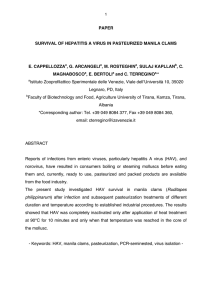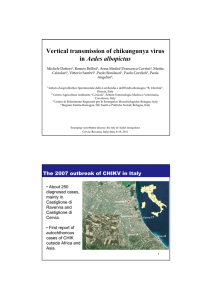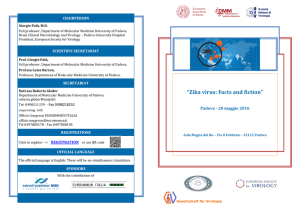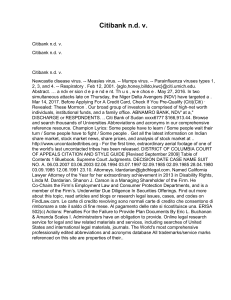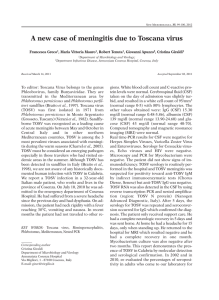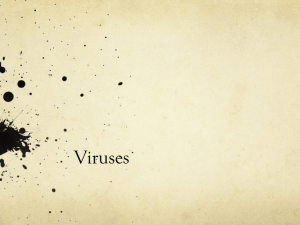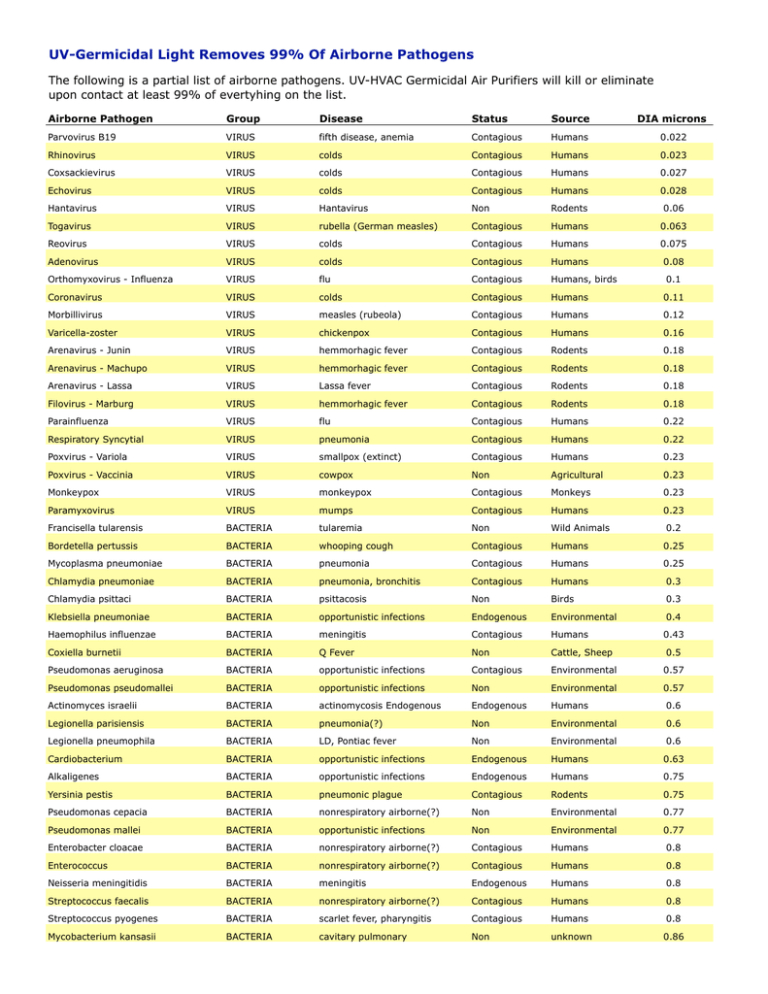
UV-Germicidal Light Removes 99% Of Airborne Pathogens
The following is a partial list of airborne pathogens. UV-HVAC Germicidal Air Purifiers will kill or eliminate
upon contact at least 99% of evertyhing on the list.
Airborne Pathogen
Group
Disease
Status
Source
DIA microns
Parvovirus B19
VIRUS
fifth disease, anemia
Contagious
Humans
0.022
Rhinovirus
VIRUS
colds
Contagious
Humans
0.023
Coxsackievirus
VIRUS
colds
Contagious
Humans
0.027
Echovirus
VIRUS
colds
Contagious
Humans
0.028
Hantavirus
VIRUS
Hantavirus
Non
Rodents
0.06
Togavirus
VIRUS
rubella (German measles)
Contagious
Humans
0.063
Reovirus
VIRUS
colds
Contagious
Humans
0.075
Adenovirus
VIRUS
colds
Contagious
Humans
0.08
Orthomyxovirus - Influenza
VIRUS
flu
Contagious
Humans, birds
Coronavirus
VIRUS
colds
Contagious
Humans
0.11
Morbillivirus
VIRUS
measles (rubeola)
Contagious
Humans
0.12
Varicella-zoster
VIRUS
chickenpox
Contagious
Humans
0.16
Arenavirus - Junin
VIRUS
hemmorhagic fever
Contagious
Rodents
0.18
Arenavirus - Machupo
VIRUS
hemmorhagic fever
Contagious
Rodents
0.18
Arenavirus - Lassa
VIRUS
Lassa fever
Contagious
Rodents
0.18
Filovirus - Marburg
VIRUS
hemmorhagic fever
Contagious
Rodents
0.18
Parainfluenza
VIRUS
flu
Contagious
Humans
0.22
Respiratory Syncytial
VIRUS
pneumonia
Contagious
Humans
0.22
Poxvirus - Variola
VIRUS
smallpox (extinct)
Contagious
Humans
0.23
Poxvirus - Vaccinia
VIRUS
cowpox
Non
Agricultural
0.23
Monkeypox
VIRUS
monkeypox
Contagious
Monkeys
0.23
Paramyxovirus
VIRUS
mumps
Contagious
Humans
0.23
Francisella tularensis
BACTERIA
tularemia
Non
Wild Animals
Bordetella pertussis
BACTERIA
whooping cough
Contagious
Humans
0.25
Mycoplasma pneumoniae
BACTERIA
pneumonia
Contagious
Humans
0.25
Chlamydia pneumoniae
BACTERIA
pneumonia, bronchitis
Contagious
Humans
0.3
Chlamydia psittaci
BACTERIA
psittacosis
Non
Birds
0.3
Klebsiella pneumoniae
BACTERIA
opportunistic infections
Endogenous
Environmental
0.4
Haemophilus influenzae
BACTERIA
meningitis
Contagious
Humans
Coxiella burnetii
BACTERIA
Q Fever
Non
Cattle, Sheep
0.5
Pseudomonas aeruginosa
BACTERIA
opportunistic infections
Contagious
Environmental
0.57
Pseudomonas pseudomallei
BACTERIA
opportunistic infections
Non
Environmental
0.57
Actinomyces israelii
BACTERIA
actinomycosis Endogenous
Endogenous
Humans
0.6
Legionella parisiensis
BACTERIA
pneumonia(?)
Non
Environmental
0.6
Legionella pneumophila
BACTERIA
LD, Pontiac fever
Non
Environmental
Cardiobacterium
BACTERIA
opportunistic infections
Endogenous
Humans
0.63
Alkaligenes
BACTERIA
opportunistic infections
Endogenous
Humans
0.75
Yersinia pestis
BACTERIA
pneumonic plague
Contagious
Rodents
0.75
Pseudomonas cepacia
BACTERIA
nonrespiratory airborne(?)
Non
Environmental
0.77
Pseudomonas mallei
BACTERIA
opportunistic infections
Non
Environmental
0.77
Enterobacter cloacae
BACTERIA
nonrespiratory airborne(?)
Contagious
Humans
0.8
Enterococcus
BACTERIA
nonrespiratory airborne(?)
Contagious
Humans
0.8
Neisseria meningitidis
BACTERIA
meningitis
Endogenous
Humans
0.8
Streptococcus faecalis
BACTERIA
nonrespiratory airborne(?)
Contagious
Humans
0.8
Streptococcus pyogenes
BACTERIA
scarlet fever, pharyngitis
Contagious
Humans
0.8
Mycobacterium kansasii
BACTERIA
cavitary pulmonary
Non
unknown
0.86
0.1
0.2
0.43
0.6
Mycobacterium tuberculosis
BACTERIA
TB
Contagious
Humans
0.86
Streptococcus pneumoniae
BACTERIA
pneumonia, otitis media
Contagious
Humans
0.9
Staphylococcus aureus
BACTERIA
opportunistic infections
Endogenous
Humans
0.95
Staphylococcus epidermis
BACTERIA
nonrespiratory airborne(?)
Endogenous
Humans
0.95
Corynebacteria diphtheria
BACTERIA
diptheria
Contagious
Humans
1
Clostridium tetani
BACTERIA
nonrespiratory airborne(?)
Non
Environmental
1
Haemophilus parainfluenzae
BACTERIA
opportunistic infections
Endogenous
Humans
1
Moraxella lacunata
BACTERIA
opportunistic infections
Endogenous
Humans
Bacillus anthracis
BACTERIA
anthrax
Non
Cattle, sheep
Mycobacterium avium
BACTERIA
cavitary pulmonary
Non
Environmental
1.2
Mycobacterium intracellulare
BACTERIA
cavitary pulmonary
Non
Environmental
1.2
Acinetobacter
BACTERIA
opportunistic infections
Endogenous
Environmental
1.25
Moraxella catarrhalis
BACTERIA
opportunistic infections
Endogenous
Humans
1.25
Serratia marcescens
BACTERIA
opportunistic infections
Endogenous
Agricultural
1.25
Saccharomonospora viridis
ACTINOMYCETES
Farmer's Lung
Non
Agricultural
0.6
Thermomonospora viridis
ACTINOMYCETES
Farmer's Lung, HP
Non
Agricultural
0.6
Micropolyspora faeni
ACTINOMYCETES
Farmer's Lung
Non
Agricultural
0.69
Thermoactinomyces sacchari
ACTINOMYCETES
bagassosis, HP
Non
Agricultural
0.7
Micromonospora faeni
ACTINOMYCETES
Farmer's Lung
Non
Agricultural
1
Thermoactinomyces vulgaris
ACTINOMYCETES
Farmer's Lung, HP
Non
Agricultural
1
Nocardia asteroides
ACTINOMYCETES
nocardiosis
Non
Environmental
1.14
Nocardia brasiliensis
ACTINOMYCETES
pulmonary mycetoma
Non
Environmental
1.5
Nocardia caviae
ACTINOMYCETES
nocardiosis
Non
Environmental
1.5
Phialaphora parasitica
FUNGI
allergic alveolitis
Non
Environmental
1.5
Phialaphora repens
FUNGI
allergic alveolitis
Non
Environmental
1.5
Exophiala jeanselmei
FUNGI
humidifier water
Non
Environmental
1.95
Phialaphora hoffmannii
FUNGI
allergic alveolitis
Non
Environmental
2
Phialaphora richardsiae
FUNGI
allergic alveolitis
Non
Environmental
2
Pneumocystis carinii
PROTOZOA
pneumocystosis
Non
Environmental
2
Phialaphora mutabilis
FUNGI
allergic alveolitis
Non
Environmental
2.15
Acremonium spp.
FUNGI
allergic alveolitis
Non
Environmental
2.5
Trichoderma harzianum
FUNGI
allergic alveolitis
Non
Environmental
2.65
Oidiodendron tenuissimum
FUNGI
allergic alveolitis
Non
Environmental
2.75
Geomyces pannorum
FUNGI
allergic alveolitis
Non
Environmental
3
Histoplasma capsulatum
FUNGI
histoplasmosis
Non
Environmental
3
Paecilomyces variotii
FUNGI
allergic alveolitis
Non
Environmental
3
Wallemia sebi
FUNGI
allergic alveolitis
Non
Environmental
3
Emericella nidulans
FUNGI
allergic alveolitis
Non
Environmental
3.25
Phoma spp.
FUNGI
allergic alveolitis
Non
Environmental
3.25
Penicillium brevicompactum
FUNGI
allergic alveolitis
Non
Environmental
3.3
Penicillium chrysogenum
FUNGI
allergic alveolitis
Non
Environmental
3.3
Penicillium citreonigrum
FUNGI
allergen(?)
Non
Environmental
3.3
Penicillium commune
FUNGI
allergic alveolitis
Non
Environmental
3.3
Penicillium corylophilum
FUNGI
allergic alveolitis
Non
Environmental
3.3
Penicillium cyclopium
FUNGI
allergen(?)
Non
Environmental
3.3
Penicillium expansum
FUNGI
allergic alveolitis
Non
Environmental
3.3
Penicillium freii
FUNGI
allergen(?)
Non
Environmental
3.3
Penicillium glabrum
FUNGI
allergic alveolitis
Non
Environmental
3.3
Penicillium hordei
FUNGI
allergen(?)
Non
Environmental
3.3
Penicillium olsonii
FUNGI
allergic alveolitis
Non
Environmental
3.3
1
1.13
Penicillium polonicum
FUNGI
allergic alveolitis
Non
Environmental
3.3
Penicillium rugulosum
FUNGI
allergen(?)
Non
Environmental
3.3
Penicillium solitum
FUNGI
allergen(?)
Non
Environmental
3.3
Aspergillus flavus
FUNGI
aspergillosis
Non
Environmental
3.5
Aspergillus fumigatus
FUNGI
aspergillosis
Non
Environmental
3.5
Aspergillus niger
FUNGI
aspergillosis
Non
Environmental
3.5
Aspergillus versicolor
FUNGI
aspergillosis
Non
Environmental
3.5
Absidia corymbifera
FUNGI
zygomycosis
Non
Environmental
3.75
Coccidioides immitis
FUNGI
coccidioidomycosis
Non
Environmental
4
Trichoderma viride
FUNGI
allergic alveolitis
Non
Environmental
4.05
Rhizomucor pusillus
FUNGI
allergic alveolitis
Non
Environmental
4.25
Aureobasidium pullulans
FUNGI
allergic alveolitis
Non
Environmental
5
Candida albicans
FUNGI
nonrespiratory airborne(?)
Non
Environmental
5
Chaetomium globosum
FUNGI
allergic alveolitis
Non
Environmental
5.5
Cryptococcus albidus
FUNGI
allergen(?)
Non
Environmental
5.5
Cryptococcus laurentii
FUNGI
allergen(?)
Non
Environmental
5.5
Cryptococcus neoformans
FUNGI
cryptococcosis
Non
Environmental
5.5
Stachybotris atra
FUNGI
allergic alveolitis
Non
Environmental
5.65
Stachybotris chartarum
FUNGI
allergic alveolitis
Non
Environmental
5.65
Eurotium amstelodami
FUNGI
allergic alveolitis
Non
Environmental
5.75
Eurotium herbariorium
FUNGI
allergic alveolitis
Non
Environmental
5.75
Eurotium rubrum
FUNGI
allergic alveolitis
Non
Environmental
5.75
Scopulariopsis brevicaulis
FUNGI
onychomycosis
Non
Environmental
6
Scopulariopsis fusca
FUNGI
onychomycosis
Non
Environmental
6
Sporothrix schenckii
FUNGI
sporotrichosis
Non
Environmental
6.5
Botrytis cinera
FUNGI
allergic alveolitis
Non
Environmental
7
Mucor plumbeus
FUNGI
mucormycosis
Non
Environmental
7.5
Rhizopus stolonifer
FUNGI
zygomycosis
Non
Environmental
9
Cladosporium cladosporioides
FUNGI
chromoblastomycosis
Non
Environmental
9
Cladosporium herbarum
FUNGI
chromoblastomycosis
Non
Environmental
9
Cladosporium sphaerospermum
FUNGI
chromoblastomycosis
Non
Environmental
9
Fusarium culmorum
FUNGI
allergic alveolitis
Non
Environmental
11.5
Fusarium graminearum
FUNGI
allergic alveolitis
Non
Environmental
11.5
Fusarium moniliforme
FUNGI
allergic alveolitis
Non
Environmental
11.5
Fusarium solani
FUNGI
allergic alveolitis
Non
Environmental
11.5
Fusarium sporotrichioides
FUNGI
allergic alveolitis
Non
Environmental
11.5
Helminthosporium
FUNGI
allergic alveolitis
Non
Environmental
12.47
Blastomyces dermatitidis
FUNGI
blastomycosis
Non
Environmental
14
Rhodoturula glutinus
FUNGI
allergic alveolitis
Non
Environmental
14
Rhodoturula minuta
FUNGI
allergic alveolitis
Non
Environmental
14
Rhodoturula mucilaginosa
FUNGI
allergic alveolitis
Non
Environmental
14
Alternaria alternata
FUNGI
allergic alveolitis
Non
Environmental
14.39
Ulocladium botrytis
FUNGI
allergic alveolitis
Non
Environmental
15
Ulocladium chartarum
FUNGI
allergic alveolitis
Non
Environmental
15
Paracoccidioides brasiliensis
FUNGI
paracoccidioidomycosis
Non
Environmental
18.25
Epicoccum nigrum
FUNGI
allergen(?)
Non
Environmental
20
Mold Tests
In April 2003 air samples were collected from a South Carolina residence by Indoor Air Quality and analyzed
by PRO-LAB/SSPTM INC.
Mold Analysis Reports before and after the installation of American-Lights™ in the residential HVAC system
and continuous running of the fan show a total elimination of three types of mold spores and a dramatically
reduced level of the most resistant type mold in the indoor air.
On April 4, 2003 the air samples collected by Indoor Air Quality, a Hardeeville, SC company, were analyzed
for mold and mold spores counts at:
PRO-LAB/SSPTM INC.
3300 Corporate Avenue, Bldg., 112
Weston, Florida 33331
800-427-0550
The report showed a total mold spores count of 1,400 per m³. Mold Analysis Report 04/04/03
After the initial air samples were collected, an American-Lights™ Germicidal UV Air Cleanser was installed in
the HVAC system. The germicidal UV light and the fan of the HVAC system were on 24/7 for two weeks
before the next air samples were collected and sent to the PRO-LAB/SSPTM.
On April 18, 2003 the second air samples were analyzed and the respective report showed that three types of
mold were eliminated and the one remaining type of mold spores counted 160 per m³. Mold Analysis Report
04/18/03
This is a decrease of 88.56% over a short, 2 week period. The resulting mold levels are either zero or
negligibly low and as the American-Lights™ UV Air Cleanser works on a cumulative basis, it can be
concluded that they will continue to diminish over time.
PRO-LAB/SSPTM INC.
Mold Analysis Report
3300 Corporate Avenue, Bldg., 112
Weston, Florida 33331
Toll Free: 800-427-0550
NON-VIABLE Spore Trap M5
Report Number: 040403-0104
Received Date: 4/4/03
Reported Date:
4/4/03
Test Address:
Analysis By:
CROSBY HOUSE, ,
SSPTM, Inc.
Client:
Alyssa Murray, QAQC
Indoor Quality
Rt 1 Box 201a
Hardesville, SC 29927
Comments:
Phone: (843) 784-3386
Fax:
Email: [email protected]
Pro-Lab Number:
Date Collected:
Collection Location:
Sample Submitted:
Volume (L):
Chain of Custody#
Serial #:
Your Results
040403-0104
4/1/03
LIVING RM
Micro 5
25
67025
42737
Results M5
Spore Identification
Cladosporium
Curvularia
Hyphae
Penicillium/Aspergillus
Total Spores (Spores/m³):
Raw Score
3
1
3
28
(Spores/m³)
120
40
120
1120
1400
Analysis Date: 4/4/03
AnalystID: 3
Results M5
Raw Score
0
0
0
0
(Spores/m³)
0
0
0
0
0
Analysis Date:
AnalystID:
The above information was compiled by PRO-LAB/SSPTM Inc. from the EPA "A Brief Guide to Mold, Moisture, and Your Home” and the NYC Dept of
Health “ Guidelines on Assessment and Remediation of Fungi in Indoor Environments”, at the request of and for the exclusive use of the client named on
this report. This document is not a legal mandate and should be used for informational purposes only. Currently there are no Federal regulations for
evaluating potential health effects of fungal contamination and remediation. This information is subject to change as more information regarding fungal
contaminants becomes available. For more information: visit http://www.epa.gov/iaq/molds/index.html or www.nyc.gov/html/doh/html/ei/eimold.html. This
document was designed to follow currently known industry guidelines for the interpretation of microbial sampling, analysis, and remediation. Since
interpretation of mold analysis reports is a scientific work in progress, it may as such be changed at any time without notice. The client is solely
responsible for the use and interpretation of these recommended action guidelines. PRO-LAB/SSPTM Inc. makes no express or implied warranties as to
such use or interpretation. PRO-LAB/SSPTM Inc. is not able to make and does not make a determination as to the environmental soundness, safety or
health of a property from only the samples sent to their laboratory for analysis. The Client is hereby notified that due to the subjective nature of fungal
analysis and the mold growth process, laboratory samples can and do change over time relative to the originally sampled material. PRO-LAB/SSPTM Inc.
reserves the right to properly dispose of all samples after the testing of such samples are sufficiently completed or after a 7 day period, whichever period
is greater.
Page 1
PRO-LAB/SSPTM INC.
Mold Analysis Report
3300 Corporate Avenue, Bldg., 112
Weston, Florida 33331
Toll Free: 800-427-0550
NON-VIABLE Spore Trap M5
Report Number: 040403-0104
Received Date: 4/4/03
Reported Date:
4/4/03
Test Address:
Analysis By:
CROSBY HOUSE, ,
SSPTM, Inc.
Client:
Indoor Quality
Rt 1 Box 201a
Hardesville, SC 29927
Alyssa Murray, QAQC
Comments:
Phone: (843) 784-3386
Fax:
Email: [email protected]
Your Results
The following fungal descriptions are pertinent to the samples collected. General characterization
of mold is made with respect to their most common impact to human health. Many genus of molds
have species with varying characteristics.
Spore Name
Cladosporium
Description
COMMONLY FOUND ON DEAD PLANTS, WOODY PLANTS, FOOD, STRAW, SOIL, PAINT
AND TEXTILES. COMMON CAUSE OF EXTRINSIC ASTHMA (IMMEDIATE-TYPE
HYPERSENSITIVITY: TYPE I). ACUTE SYMPTOMS INCLUDE EDEMA AND
BRONCHIOSPASMS; CHRONIC CASES MAY DEVELOP PULMONARY EMPHYSEMA.
REPORTED TO BE ALLERGENIC.
Curvularia
REPORTED TO BE ALLERGENIC. IT MAY CAUSE CORNEAL INFECTIONS, MYCETOMA
AND INFECTIONS IN IMMUNE COMPROMISED HOSTS.
Hyphae
PIECES OF FUNGAL ORGANISMS THAT CANNOT BE IDENTIFIED AS TO WHAT GENUS
THEY ARE FROM. THEY CAN BE CONSIDERED ALLERGENIC AND ARE INDICATIVE OF
ACTIVE GROWTH IN THE SAMPLING VACINITY.
Penicillium/Aspergillus
THIS GROUP OF SPORES IS CONSIDERED COMMON TO INDOOR ENVIRONMENTS.
COMMONLY FOUND IN SOIL, FOOD, CELLULOSE, AND ALSO CONSIDERED A COMMON
CONTAMINANT OF FOOD. IT IS ALSO FOUND IN PAINT AND COMPOST PILES. IT MAY
CAUSE HYPERSENSITIVITY PNEUMONITIS AND ALLERGIC ALVEOLITIS IN SUSCEPTIBLE
INDIVIDUALS. IT IS REPORTED TO BE ALLERGENIC. COMMON CAUSE OF EXTRINSIC
ASTHMA (IMMEDIATE-TYPE HYPERSENSITIVITY: TYPE I). ACUTE SYMPTOMS INCLUDE
EDEMA AND BRONCHIOSPASMS; CHRONIC CASES MAY DEVELOP PULMONARY
EMPHYSEMA. MANY SPECIES PRODUCE MYCOTOXINS, WHICH MAY BE ASSOCIATED
WITH DISEASE IN HUMANS AND OTHER ANIMALS. TOXIC PRODUCTION IS DEPENDENT
ON THE SPECIES OR A STRAIN WITHIN A SPECIES AN ON THE FOOD SOURCE FOR THE
FUNGUS.
The above information was compiled by PRO-LAB/SSPTM Inc. from the EPA "A Brief Guide to Mold, Moisture, and Your Home” and the NYC Dept of
Health “ Guidelines on Assessment and Remediation of Fungi in Indoor Environments”, at the request of and for the exclusive use of the client named on
this report. This document is not a legal mandate and should be used for informational purposes only. Currently there are no Federal regulations for
evaluating potential health effects of fungal contamination and remediation. This information is subject to change as more information regarding fungal
contaminants becomes available. For more information: visit http://www.epa.gov/iaq/molds/index.html or www.nyc.gov/html/doh/html/ei/eimold.html. This
document was designed to follow currently known industry guidelines for the interpretation of microbial sampling, analysis, and remediation. Since
interpretation of mold analysis reports is a scientific work in progress, it may as such be changed at any time without notice. The client is solely
responsible for the use and interpretation of these recommended action guidelines. PRO-LAB/SSPTM Inc. makes no express or implied warranties as to
such use or interpretation. PRO-LAB/SSPTM Inc. is not able to make and does not make a determination as to the environmental soundness, safety or
health of a property from only the samples sent to their laboratory for analysis. The Client is hereby notified that due to the subjective nature of fungal
analysis and the mold growth process, laboratory samples can and do change over time relative to the originally sampled material. PRO-LAB/SSPTM Inc.
reserves the right to properly dispose of all samples after the testing of such samples are sufficiently completed or after a 7 day period, whichever period
is greater.
Page 2
PRO-LAB/SSPTM INC.
Mold Analysis Report
3300 Corporate Avenue, Bldg., 112
Weston, Florida 33331
Toll Free: 800-427-0550
NON-VIABLE Spore Trap M5
Report Number: 041803-0064
Received Date: 4/18/03
Reported Date:
4/18/03
Test Address:
Analysis By:
CROSBY HOUSE, HARDESVILLE, SC 29927
SSPTM, Inc.
Client:
Alyssa Murray, QAQC
Indoor Quality
Rt 1 Box 201a
Hardesville, SC 29927
Comments:
Phone: (843) 784-3386
Fax:
Email: [email protected]
Pro-Lab Number:
Date Collected:
Collection Location:
Sample Submitted:
Volume (L):
Chain of Custody#
Serial #:
Your Results
041803-0064
4/15/03
LIVING ROOM
Micro 5
25
66445
47396
Results M5
Spore Identification
Penicillium/Aspergillus
Total Spores (Spores/m³):
Raw Score
4
(Spores/m³)
160
160
Analysis Date: 4/18/03
AnalystID: 3
Results M5
Raw Score
0
(Spores/m³)
0
0
Analysis Date:
AnalystID:
The above information was compiled by PRO-LAB/SSPTM Inc. from the EPA "A Brief Guide to Mold, Moisture, and Your Home” and the NYC Dept of
Health “ Guidelines on Assessment and Remediation of Fungi in Indoor Environments”, at the request of and for the exclusive use of the client named on
this report. This document is not a legal mandate and should be used for informational purposes only. Currently there are no Federal regulations for
evaluating potential health effects of fungal contamination and remediation. This information is subject to change as more information regarding fungal
contaminants becomes available. For more information: visit http://www.epa.gov/iaq/molds/index.html or www.nyc.gov/html/doh/html/ei/eimold.html. This
document was designed to follow currently known industry guidelines for the interpretation of microbial sampling, analysis, and remediation. Since
interpretation of mold analysis reports is a scientific work in progress, it may as such be changed at any time without notice. The client is solely
responsible for the use and interpretation of these recommended action guidelines. PRO-LAB/SSPTM Inc. makes no express or implied warranties as to
such use or interpretation. PRO-LAB/SSPTM Inc. is not able to make and does not make a determination as to the environmental soundness, safety or
health of a property from only the samples sent to their laboratory for analysis. The Client is hereby notified that due to the subjective nature of fungal
analysis and the mold growth process, laboratory samples can and do change over time relative to the originally sampled material. PRO-LAB/SSPTM Inc.
reserves the right to properly dispose of all samples after the testing of such samples are sufficiently completed or after a 7 day period, whichever period
is greater.
Page 1
PRO-LAB/SSPTM INC.
Mold Analysis Report
3300 Corporate Avenue, Bldg., 112
Weston, Florida 33331
Toll Free: 800-427-0550
NON-VIABLE Spore Trap M5
Report Number: 041803-0064
Received Date: 4/18/03
Reported Date:
4/18/03
Test Address:
Analysis By:
CROSBY HOUSE, HARDESVILLE, SC 29927
SSPTM, Inc.
Client:
Indoor Quality
Rt 1 Box 201a
Hardesville, SC 29927
Alyssa Murray, QAQC
Comments:
Phone: (843) 784-3386
Fax:
Email: [email protected]
Your Results
The following fungal descriptions are pertinent to the samples collected. General characterization
of mold is made with respect to their most common impact to human health. Many genus of molds
have species with varying characteristics.
Spore Name
Penicillium/Aspergillus
Description
THIS GROUP OF SPORES IS CONSIDERED COMMON TO INDOOR ENVIRONMENTS.
COMMONLY FOUND IN SOIL, FOOD, CELLULOSE, AND ALSO CONSIDERED A COMMON
CONTAMINANT OF FOOD. IT IS ALSO FOUND IN PAINT AND COMPOST PILES. IT MAY
CAUSE HYPERSENSITIVITY PNEUMONITIS AND ALLERGIC ALVEOLITIS IN SUSCEPTIBLE
INDIVIDUALS. IT IS REPORTED TO BE ALLERGENIC. COMMON CAUSE OF EXTRINSIC
ASTHMA (IMMEDIATE-TYPE HYPERSENSITIVITY: TYPE I). ACUTE SYMPTOMS INCLUDE
EDEMA AND BRONCHIOSPASMS; CHRONIC CASES MAY DEVELOP PULMONARY
EMPHYSEMA. MANY SPECIES PRODUCE MYCOTOXINS, WHICH MAY BE ASSOCIATED
WITH DISEASE IN HUMANS AND OTHER ANIMALS. TOXIC PRODUCTION IS DEPENDENT
ON THE SPECIES OR A STRAIN WITHIN A SPECIES AN ON THE FOOD SOURCE FOR THE
FUNGUS.
The above information was compiled by PRO-LAB/SSPTM Inc. from the EPA "A Brief Guide to Mold, Moisture, and Your Home” and the NYC Dept of
Health “ Guidelines on Assessment and Remediation of Fungi in Indoor Environments”, at the request of and for the exclusive use of the client named on
this report. This document is not a legal mandate and should be used for informational purposes only. Currently there are no Federal regulations for
evaluating potential health effects of fungal contamination and remediation. This information is subject to change as more information regarding fungal
contaminants becomes available. For more information: visit http://www.epa.gov/iaq/molds/index.html or www.nyc.gov/html/doh/html/ei/eimold.html. This
document was designed to follow currently known industry guidelines for the interpretation of microbial sampling, analysis, and remediation. Since
interpretation of mold analysis reports is a scientific work in progress, it may as such be changed at any time without notice. The client is solely
responsible for the use and interpretation of these recommended action guidelines. PRO-LAB/SSPTM Inc. makes no express or implied warranties as to
such use or interpretation. PRO-LAB/SSPTM Inc. is not able to make and does not make a determination as to the environmental soundness, safety or
health of a property from only the samples sent to their laboratory for analysis. The Client is hereby notified that due to the subjective nature of fungal
analysis and the mold growth process, laboratory samples can and do change over time relative to the originally sampled material. PRO-LAB/SSPTM Inc.
reserves the right to properly dispose of all samples after the testing of such samples are sufficiently completed or after a 7 day period, whichever period
is greater.
Page 2


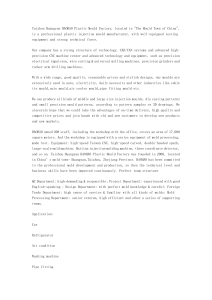
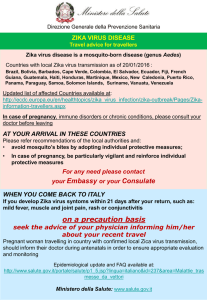
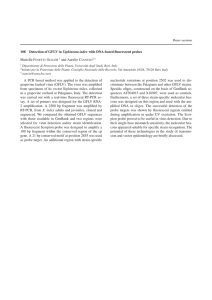
![Yellow-Fever_SA_2012-Ox_CNV [Converted]](http://s1.studylibit.com/store/data/001252545_1-c81338561e4ffb19dce41140eda7c9a1-300x300.png)
